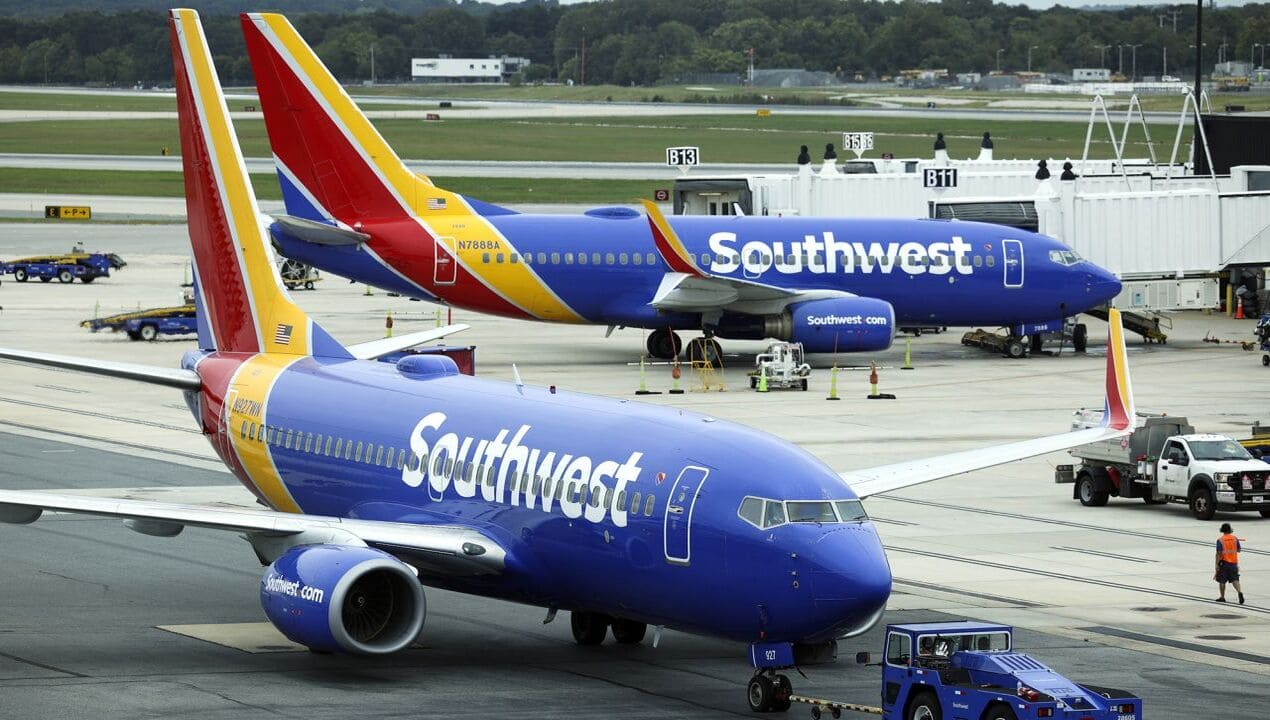
Independent Report – Two Southwest Airlines flight attendants were injured after their plane made a sudden descent to avoid a possible mid-air collision. The flight, Southwest 1496, was departing from Burbank, California, when the pilots took quick action to dodge another aircraft. According to flight tracking websites, the Boeing 737 sharply dropped nearly 500 feet during the maneuver. This event marks the second time within a week that a U.S. commercial jet had to make abrupt flight adjustments to prevent a potential collision.
The airline and the Federal Aviation Administration (FAA) confirmed that the pilots received cockpit alerts about nearby aircraft that were dangerously close. In response, the Southwest pilots climbed and descended to maintain safe separation from the other plane. Despite the sudden drop, the Boeing 737 continued its flight to Las Vegas and landed safely without further incident. These quick actions helped protect the Southwest flight attendants and passengers on board.
Flight tracking service Flightradar24 identified the other aircraft involved as a Hawker Hunter fighter jet, a British-built military aircraft. This jet crossed directly in front of the Southwest flight during takeoff. The two planes came within 4.86 miles (7.82 kilometers) horizontally and just 350 feet (107 meters) vertically. At the time of reporting, the U.S. Air Force and the Department of Defense had not issued comments regarding the military jet’s presence near Burbank. Meanwhile, the FAA launched an investigation into the incident.
Also Read : Policy Pause: Halt on Immigration Checks for Social Services
Southwest Airlines reported that two flight attendants sustained injuries during the abrupt maneuvers, although the airline did not provide specific details about the extent or nature of their injuries. No passengers were reported hurt. However, one passenger described the experience as frightening. Caitlin Burdi told Fox News Digital that the sudden descent caused panic among those on board. She recalled how passengers feared the plane was about to crash. Following the event, the pilot addressed the cabin and informed passengers that the aircraft had nearly collided with another plane.
Southwest Airlines released a statement explaining that the incident started when the crew received two onboard traffic alerts shortly after takeoff from Hollywood Burbank Airport, located north of Los Angeles. These alerts forced the pilots to make rapid climbs and descents to avoid the other aircraft.
This incident is not isolated. Just a week earlier, another close call occurred involving a SkyWest Airlines jet operating as Delta Connection. This flight was approaching a landing in North Dakota when it had to take evasive action to avoid a U.S. Air Force bomber. The FAA is currently investigating that near-miss, which happened on July 18. SkyWest Flight 3788, an Embraer ERJ-175 regional jet, managed to land safely at Minot, North Dakota.
The U.S. Air Force confirmed that a B-52 bomber was flying a ceremonial flyover of the North Dakota State Fair at the same time. The bomber’s crew was in communication with local air traffic control throughout the event. However, the Minot International Airport control tower reportedly did not alert the bomber crew about the commercial flight inbound for landing. It is worth noting that the air traffic control services at Minot are managed by a private company rather than FAA employees.
Additional investigations are underway concerning a March 28 incident near Reagan Washington National Airport. This event involved a Delta Airbus A319 jet and several Air Force T-38 Talon jets. The military jets were en route to Arlington National Cemetery for a flyover when the close call happened. The National Transportation Safety Board and FAA are both looking into this case.
Concerns over military aircraft operating near civilian flights have grown significantly, especially following a tragic collision on January 29. An Army helicopter crashed into an American Airlines regional jet near Reagan National Airport, resulting in 67 fatalities. In response, the FAA took stricter measures and restricted Army helicopter flights around the Pentagon in early May after yet another near-miss.
These repeated incidents highlight ongoing challenges in managing airspace where military and commercial flights intersect. Both the FAA and military authorities are under pressure to improve communication and coordination to prevent further dangerous encounters. Meanwhile, passengers and crew on commercial flights remain vulnerable to sudden and frightening situations caused by these close calls in the skies.
Also Read : Unique Habits of Intelligent People, According to Experts, Inspired by Bill Gates